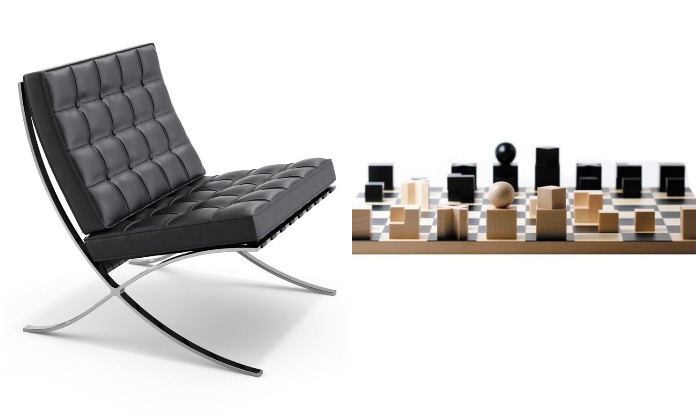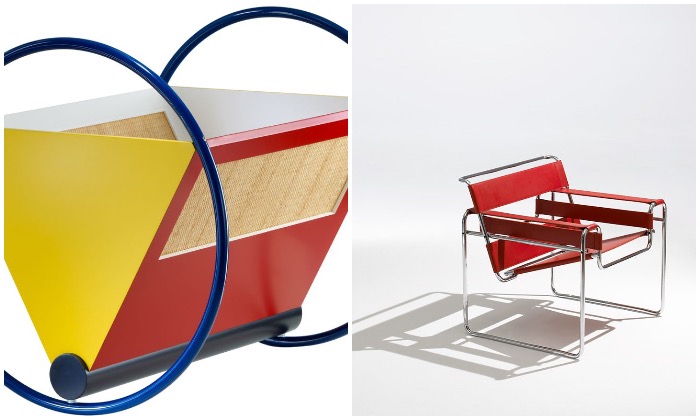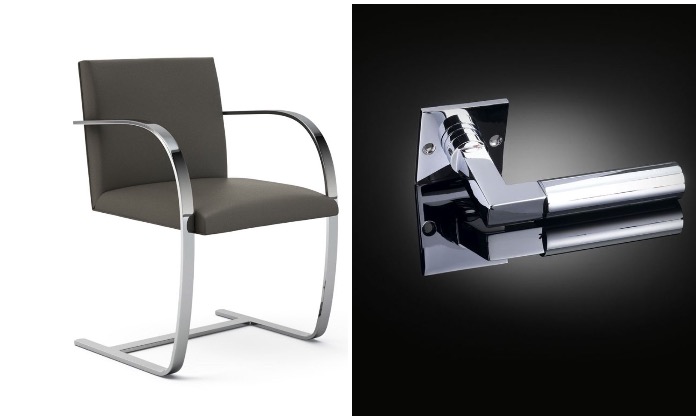
La sedia Barcelona di Mies van der Rohe e Lilly Reich e il set di scacchi Bauhaus di Josef Hartwig
Have you ever wondered what Bauhaus is and what meaning this term has in the vast world of design and art? The arrival of the Bauhaus on the world art scene was something revolutionary, a breath of fresh air that glimpsed the future of objects.
Born in the heart of Germany in Weimar, under the visionary leadership of Walter Gropius in 1929, the Bauhaus school set the milestones of the modern movement, significantly influencing the artistic and design currents that followed it.
What is meant by Bauhaus and what are the symbolic works

La culla di Peter Keler e la sedia Wassily di Marcel Breuer
The Bauhaus aspired to create a fusion of art and technology, glimpsing a perfect symbiosis between beauty and functionality that could create beautiful, useful and accessible objects for all. The Bauhaus school was characterised by a new vision of the world and had enthusiastically accepted the challenges posed by mass production, seeking a means to simplify design, making the essential aesthetically satisfying.
BAUHAUS BETWEEN ESSENCE AND MATTER
Essentiality was the pivot around which the entire Bauhaus vision revolved, whose ideas were conveyed by magazines such as De Stijl.
Every superfluous feature was eliminated, allowing primordial geometric forms to emerge, a celebration of rationality and function that characterised every creation.
On the path to modernity, the Bauhaus embraced the use of new, industrial materials such as steel, glass, plywood and plastic. These materials, unconventional in furniture design at the time, embodied the practical and revolutionary essence of Bauhaus, making an indelible mark on the design landscape.
BAUHAUS: SYMBOLIC WORKS BETWEEN FUNCTIONALITY AND AESTHETICS
Through the lens of functionalism and formal purism, the Bauhaus gave us design icons that stand the test of time. From Marcel Breuer’s Wassily Chair, inspired by the shape of a bicycle and renamed in honour of the artist Wassily Kandinsky, to Peter Keler’s Cradle, a living tribute to Kandinsky’s theory of colour.
Josef Hartwig’s chess set represents a journey into simplification, where each piece, stripped of monarchical or religious connotations, takes on geometric shapes that illustrate its possible moves on the board.
The Brno and Barcelona chairs by Mies van der Rohe represent the apotheosis of the Bauhaus vision. The Brno chair, with its cantilevered design, and the Barcelona chair, with its stainless steel frame, are testaments to the relentless pursuit of simplicity and elegance.
Even in the most minute details, Bauhaus left its mark.
The handle designed by Walter Gropius for the Fagus factory is an emblem of functionality mixed with aesthetic beauty, and is to date the best-selling product of the Bauhaus school.

La sedia Brno di Mies van der Rohe e la maniglia di Walter Gropius
Bauhaus allowed for an unprecedented dialogue between form, function and aesthetics, a legacy that continues to inspire generations of artists and designers, projecting its deep roots into the fertile soil of innovation.

